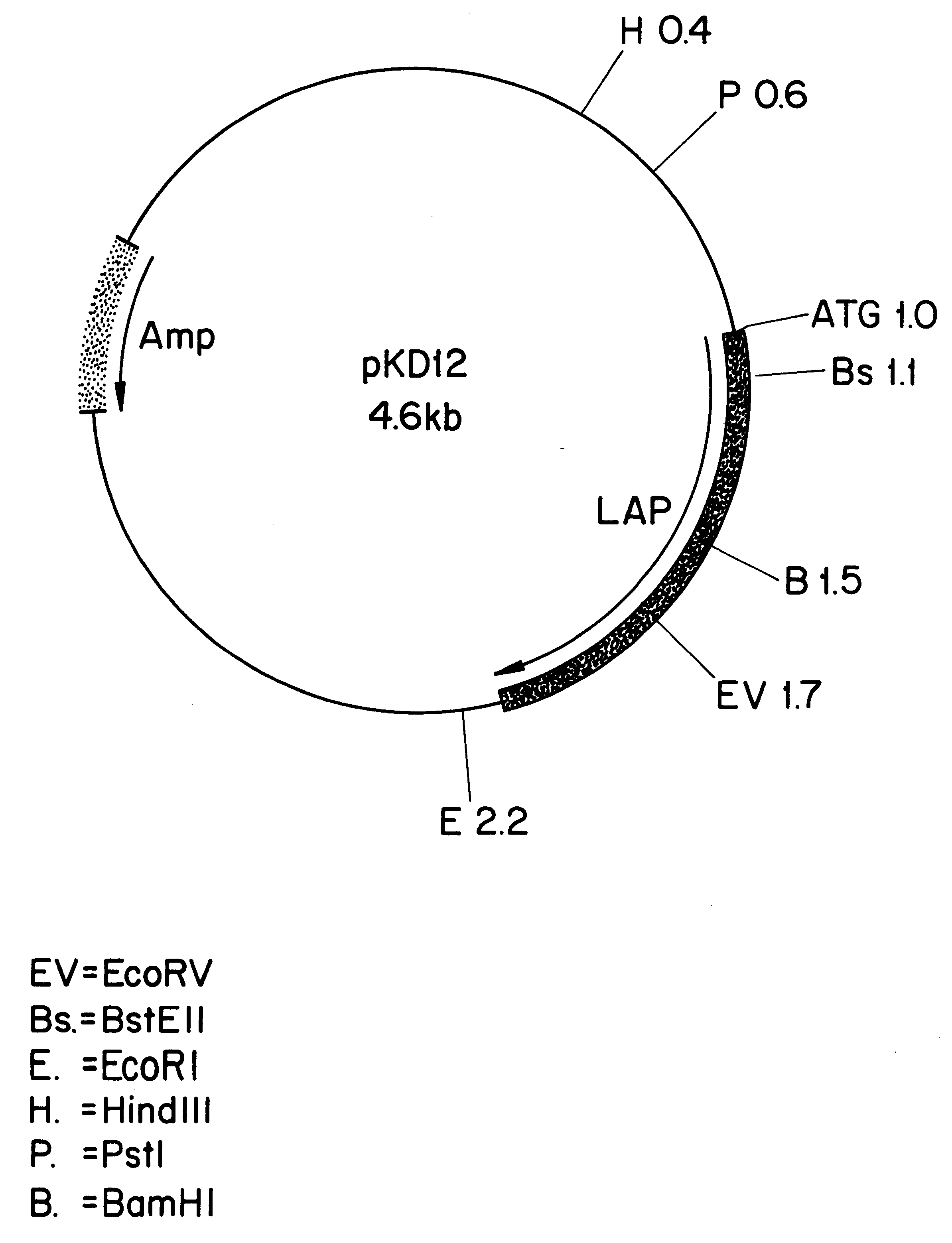Leucine aminopeptidases produced recombinantly from Aspergillus soyae
a technology of aspergillus soyae and aminopeptidases, which is applied in the field of leucine aminopeptidases produced recombinantly from aspergillus soyae, can solve the problems of termination of hydrolysis, unsatisfactory development methods, and unpleasantly bitter peptides
- Summary
- Abstract
- Description
- Claims
- Application Information
AI Technical Summary
Benefits of technology
Problems solved by technology
Method used
Image
Examples
example 1
Purification of LAP from A. soyae
100 ml of a culture filtrate of A. soyae RH3782 were made up to 1000 ml with distilled H.sub.2 O and were subsequently clarified by centrifugation for 5 minutes at 5000 g and 25.degree. Celsius. The sample was desalinated through a Sephadex G25 column (MERCK) in order to reduce its electrical conductivity. The enzyme solution which was collected had a conductivity of 3 mS / cm.
In a further step, ion-exchange chromatography was performed on DEAE-Fractogel (MERCK). For this purpose, 1000 ml of the desalinated enzyme solution were treated with 1000 ml buffer A (10 mM Tris-HCl pH 7.6, 10 mM Ca acetate) and were transferred, in several batches, to a DEAE-Fractogel column (height 235 mm, diameter 50 mm). The column was flushed with buffer A. Elution was effected in a continuous gradient of buffer A to buffer B (buffer A+1 M NaCl). Elution was effected at an elution rate of 4ml / min, and fractions of 20 ml each were collected.
The fractions were tested for the ...
example 2
Sequencing of LAP from A. soyae
The N-terminal amino acid sequence of the purified protein was determined using a gas-phase sequence determination device (Applied Biosystems Model 470A). The sequence which was determined was:
N-Tyr-Pro-Asp-Ser-Val-Gln-His-Xaa-Glu-Thr-Val-Gln-Asn-Leu-Ile-Asn-Ser-Leu-Asp-Lys-Lys-Asn-Phe-Glu-Thr-Val-Leu-Gln-Pro-Ile-Ser-Glu-Phe-His-Asn-Arg-COOH (SEQ ID NO: 3).
In addition, the purified enzyme was cleaved by means of trypsin, and the peptides obtained were separated by means of gel chromatography and were likewise sequenced. One of these tryptic peptides was denoted as T15 and was employed later for the derivation of an oligonucleotide. The amino acid sequence obtained from T15 was as follows:
N-Thr-Ile-Val-Leu-Gly-Ala-His-Gln-Asp-Ser-Ile-Asn-Leu-Asn-COOH
example 3
Derivation and Synthesis of a DNA Probe
A partial sequence from the N-terminal amino acid sequence was used as a basis for deriving the oligonucleotide DNA probe KD5, wherein use was made of the codon usage of the pectinesterase gene from A. niger, which is known from EP 388 593. In the course of this procedure, the 5'-end was altered so that an SalI restriction enzyme cleavage site was obtained. The partial sequence from N-terminal amino acid sequence was as follows:
N-Thr-Val-Leu-Gln-Pro-Ile-Ser-Glu-Phe-His-Asn-COOH (SEQ ID NO: 4)
The sequence of the derived DNA probe KD5 was as follows (the position of the SalI cleavage site is underlined):
5'-CGC GTCGACA GTA CTT CAG CCC ATC TCG GAG TTC CAA AA-3' (SEQ ID NO: 5)
A partial sequence from the tryptic peptide T15 was employed as a model for DNA probe KD4. The partial sequence was as follows:
N-Leu-Gly-Ala-His-Gln-Asp-Ser-Ile-Asn-COOH
The sequence of DNA probe KD4 was as follows:
5'-CTC GGC GCG CAC CAG GAC TCC ATC AA-3' (SEQ ID NO: 6)
Synthesis...
PUM
| Property | Measurement | Unit |
|---|---|---|
| pH | aaaaa | aaaaa |
| temperature | aaaaa | aaaaa |
| temperature | aaaaa | aaaaa |
Abstract
Description
Claims
Application Information
 Login to View More
Login to View More - R&D
- Intellectual Property
- Life Sciences
- Materials
- Tech Scout
- Unparalleled Data Quality
- Higher Quality Content
- 60% Fewer Hallucinations
Browse by: Latest US Patents, China's latest patents, Technical Efficacy Thesaurus, Application Domain, Technology Topic, Popular Technical Reports.
© 2025 PatSnap. All rights reserved.Legal|Privacy policy|Modern Slavery Act Transparency Statement|Sitemap|About US| Contact US: help@patsnap.com



